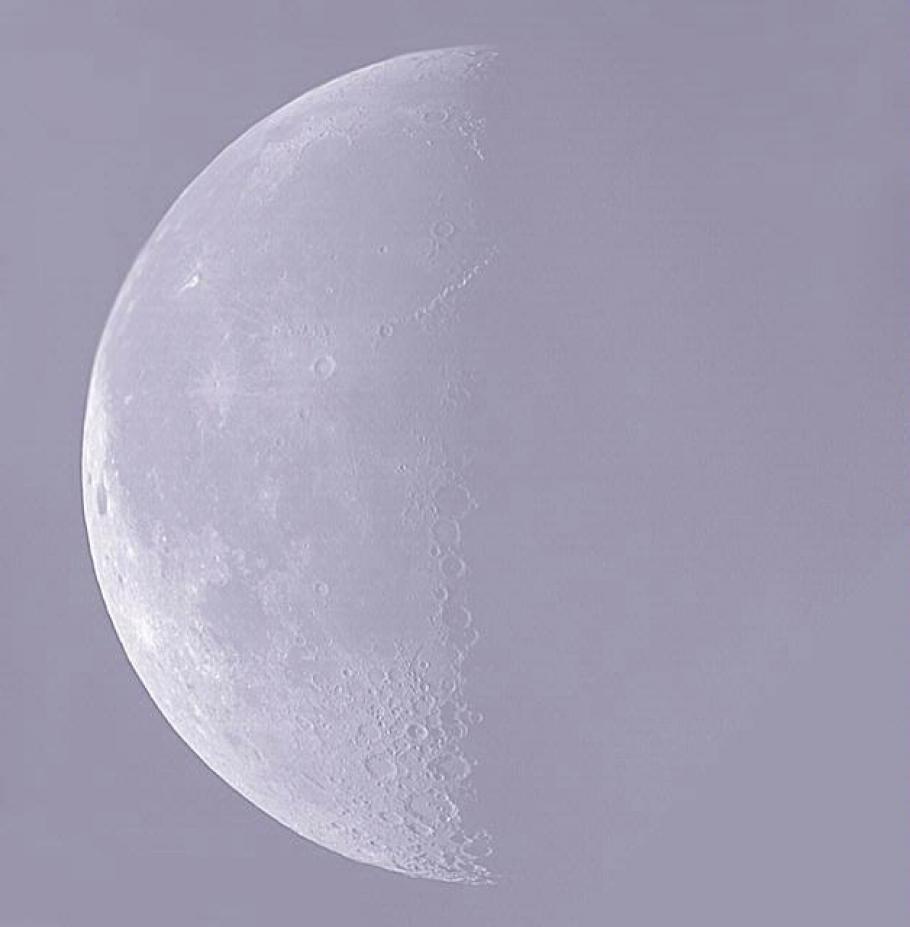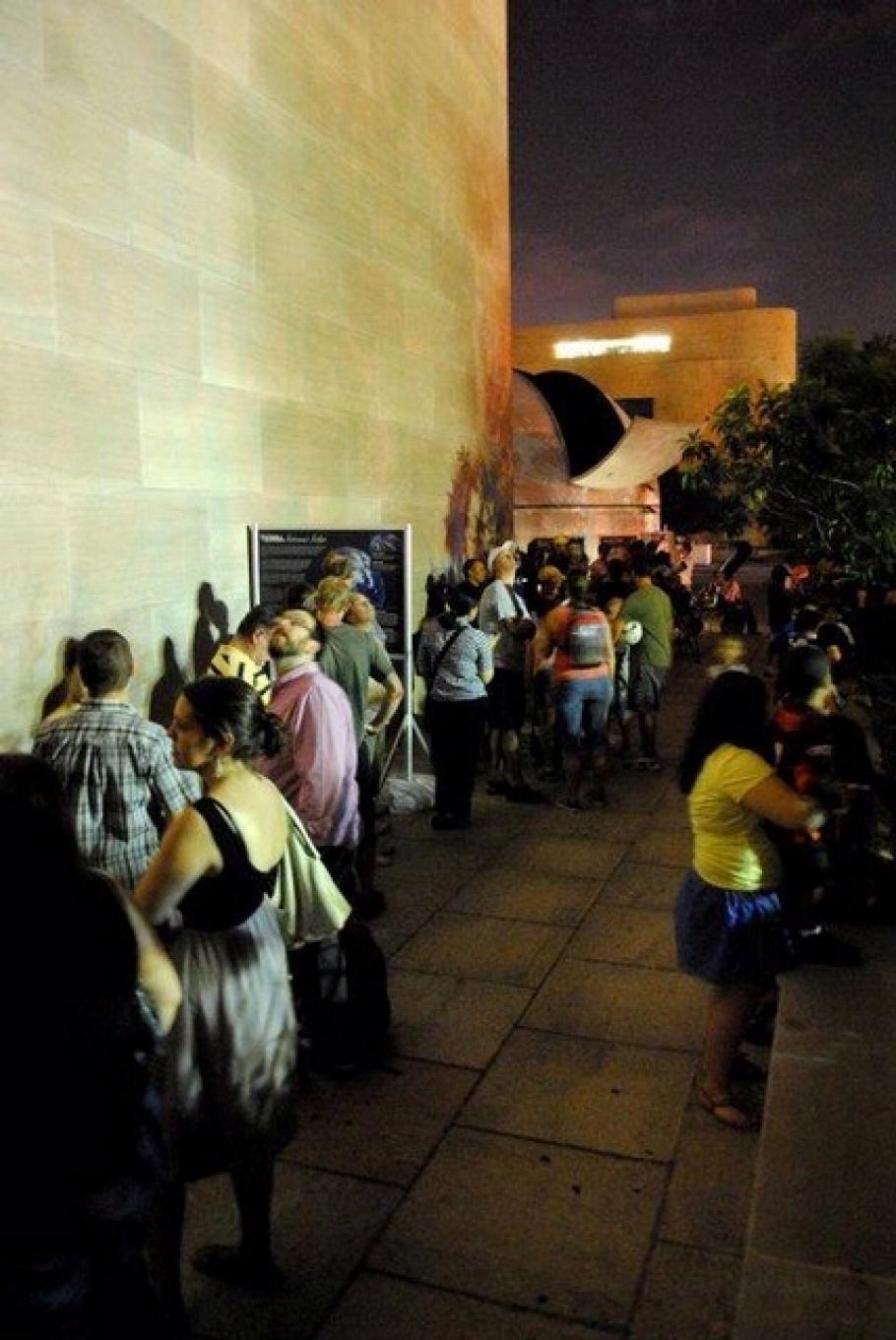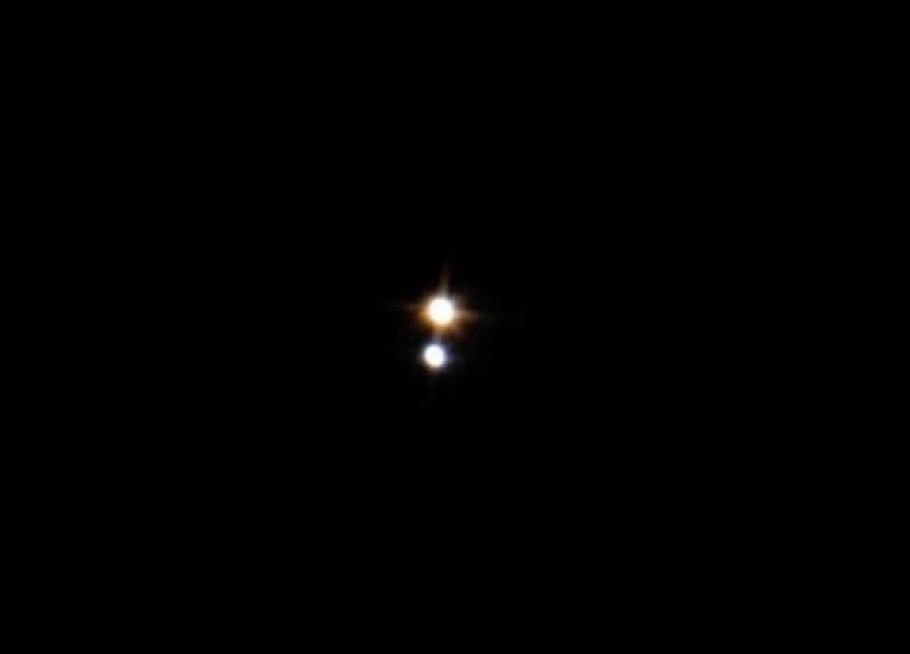The night opened with few clouds and a bright waxing gibbous moon. Alex and I, interns at the National Air and Space Museum, stood outside with Sean O'Brien, astronomy educator at the Museum and Albert Einstein Planetarium technician, to survey the sky and anticipate the night. This was my first star party at the Museum. As we set up, the first line of visitors formed outside the door of the Oublic Observatory waiting for 6 p.m. — opening time. We set up the Tele Vue telescope first. The view was spectacular. Along the terminator, the line between the dark and light sides of the Moon, craters popped between the stark white of the moon and the blue of the sky.
At 6 p.m., visitors stepped up to take their first close-up look at the Moon in the Tele Vue with Sean’s guidance. Children jumped up and down with excitement while parents assured them that if they study hard they’ll get to work on things like these too. Heads poked through the doorway of the observatory. Many folks were curious about what they would find inside so Alex began to show them around. Solar observing is our main practice during the daylight hours, Wednesday through Saturday. It isn’t often that you have access to equipment that makes it safe to look at the Sun, but we’ve got it!
Alex went over the Museum's Solar observation methods and displayed pictures the observatory has taken of the Sun. The clouds played with us all throughout the night by jumping around and in front of our targets. Often I would ask the crowd to blow in the same direction with me so perhaps we could get those pesky clouds to move just a bit. Still, it did not dampen the spirit of everyone that waited. Noah, another Museum intern, arrived and we set up the Celestron C-11 telescope on the Moon. The line split into three. One to hear Alex speak about Solar observing, one to look at the Moon through the Tele Vue, and one to look through the 11-inch Celestron that Noah manned. I ran from telescope to telescope making sure each had a target and each was in focus. Occasionally we would exchange eyepieces to see if we could get a better view. As the Sun set we began to keep an eye out for Saturn. Then the clouds split and Saturn shined out! I ran into the observatory ready to switch the 16” Boller & Chivens (B&C) telescope from close-ups of the now dark Moon craters to the bright point of the ringed planet. After a bit of searching the planet swam into view and the beauty of the rings and moons was thrilling. Quickly, Alex and I passed the update down the line and cheering floated in through the observatory door. Alex and Rick, a Museum volunteer, took over inside the observatory to help visitors see what they had been waiting for since we opened.
Next I went to check on Noah and the Celestron telescope. After some minutes and some growling at the clouds we had Saturn in our view as well. This line cheered as well and people filed past excitedly bouncing in front of the eyepiece the minute they glimpsed the beauty of the rings. One fellow told me that tonight he came to have his first view of the iconic planet and he didn’t mind waiting the whole night to fulfill his dream. Later, he told me that he wasn’t disappointed. The night ended with a search for Albireo, a binary star iconic because of its bright blue and gold coloring.
Sean began looking through the Tele Vue and called me over to help. After some quick searching I had it in my sight! Sean tightened the telescope mount and we centered and focused the image. Next, we changed the eyepiece, but when I pushed it in the mount jerked and the stars were lost. The search began again! This time was successful and the last visitors were pleased to see the bright sparkling of such a unique binary star. Finally, we said goodnight and the visitors wandered away still looking up and wondering about what else was hidden in that dark sky. We had more than 300 visitors and they looked through the telescopes more than 870 times. It was a thrilling night with many telescope adventures and many new experiences. Joe DePasquale of Chandra and Smithsonian Astrophysical Observatory (SAO) visited with us and put together a fabulous video summation of our adventures.




